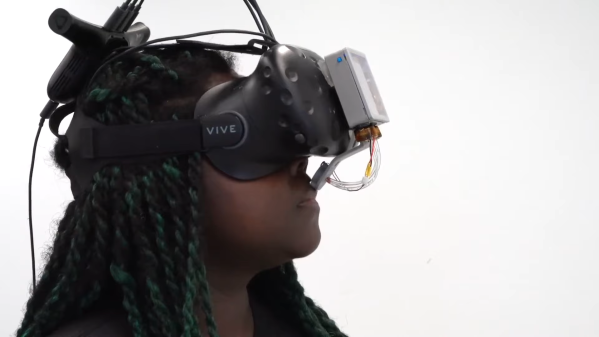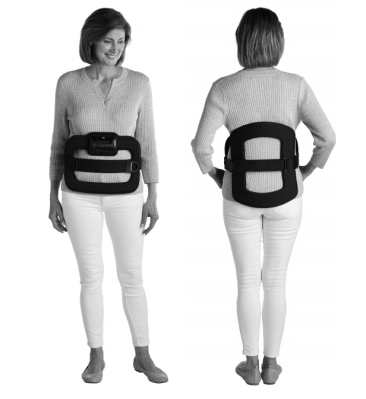Virtual reality systems are getting better and better all the time, but they remain largely ocular and auditory devices, with perhaps a little haptic feedback added in for good measure. That still leaves 40% of the five canonical senses out of the mix, unless of course this trigeminal nerve-stimulating VR accessory catches on.
While you may be tempted to look at this as a simple “Smellovision”-style olfactory feedback, the work by [Jas Brooks], [Steven Nagels], and [Pedro Lopes] at the University of Chicago’s Human-Computer Integration Lab is intended to provide a simulation of different thermal regimes that a VR user might experience in a simulation. True, the addition to an off-the-shelf Vive headset does waft chemicals into the wearer’s nose using three microfluidics pumps with vibrating mesh atomizers, but it’s the choice of chemicals and their target that makes this work. The stimulants used are odorless, so instead of triggering the olfactory bulb in the nose, they target the trigeminal nerve, which also innervates the lining of the nose and causes more systemic sensations, like the generalized hot feeling of chili peppers and the cooling power of mint. The headset leverages these sensations to change the thermal regime in a simulation.
The video below shows the custom simulation developed for this experiment. In addition to capsaicin’s heat and eucalyptol’s cooling, the team added a third channel with 8-mercapto-p-menthan-3-one, an organic compound that’s intended to simulate the smoke from a generator that gets started in-game. The paper goes into great detail on the various receptors that can be stimulated and the different concoctions needed, and full build information is available in the GitHub repo. We’ll be watching this one with interest.
Continue reading “Simulating Temperature In VR Apps With Trigeminal Nerve Stimulation”


















